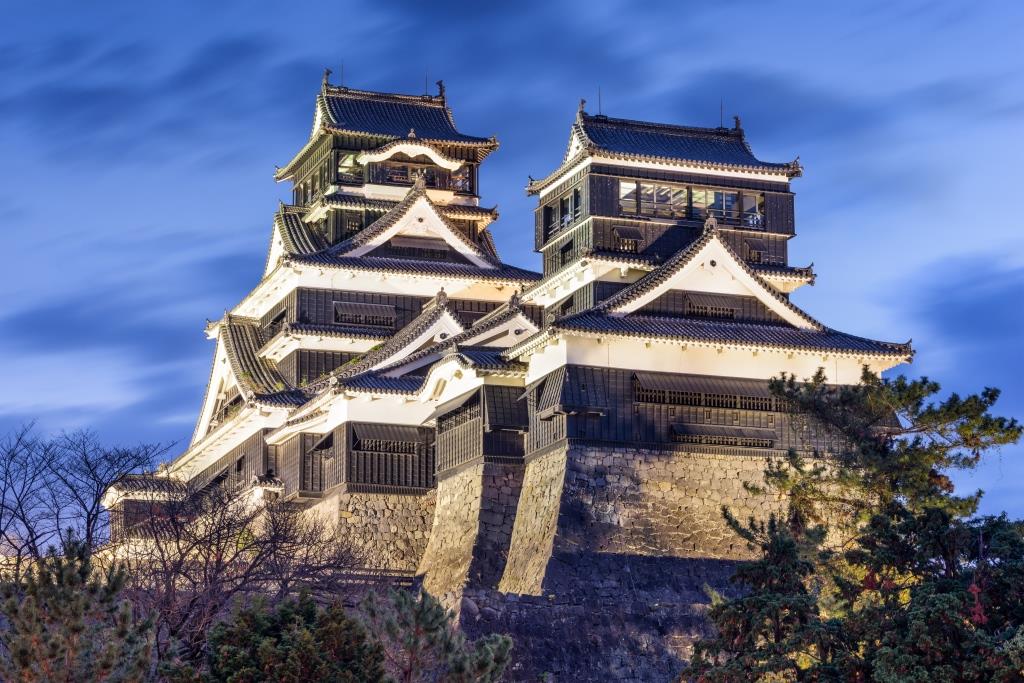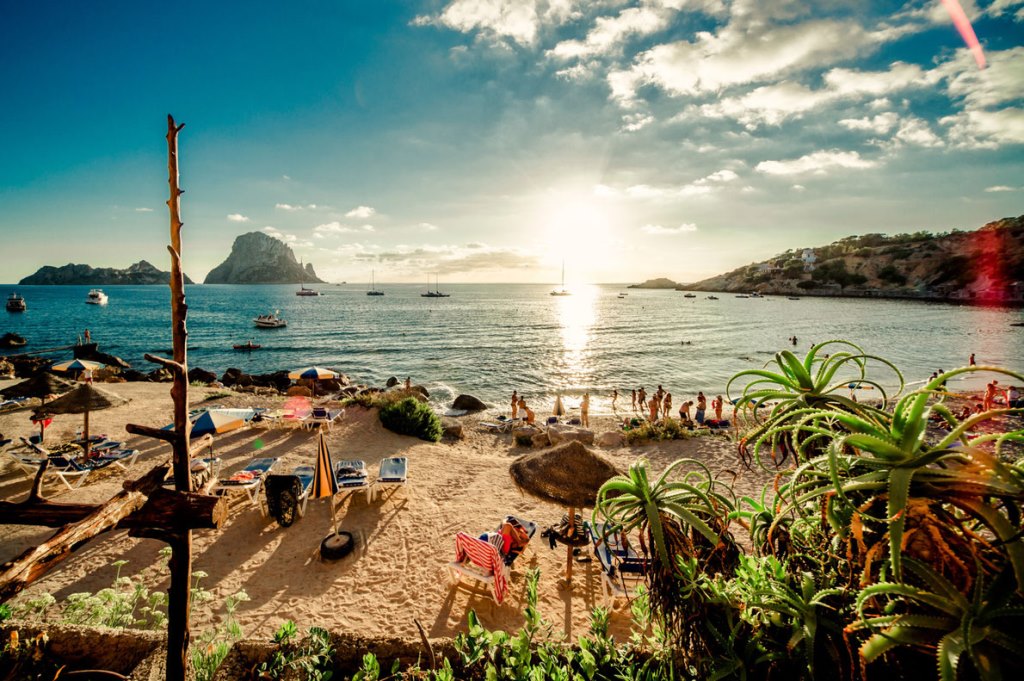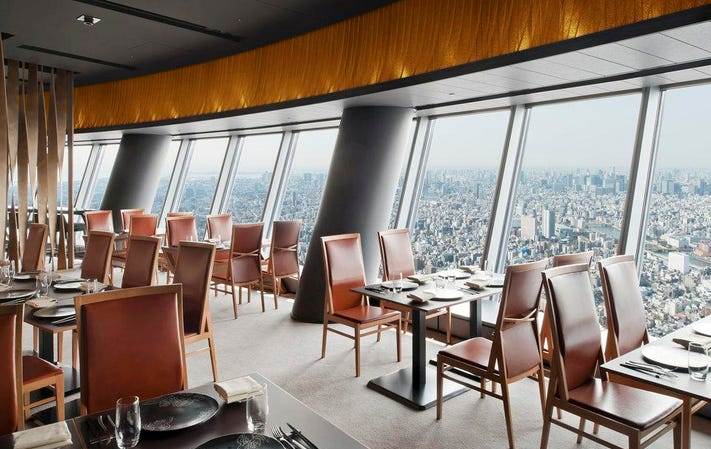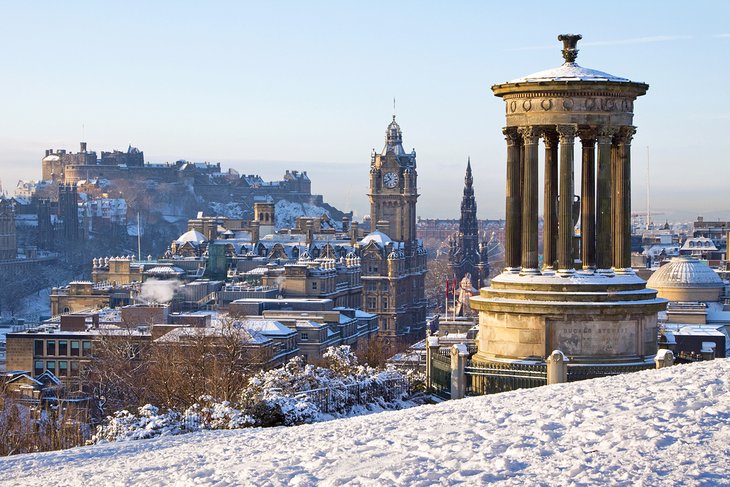Castles in Japan: Although Japan is not often associated with medieval fortifications, like, for example, Germany, a considerable number of beautiful castles have remained in the country since ancient times, which are completely different in style from European ones, which is why they are of interest.
Most of the castles were built in the Sengoku Period (from the second half of the 15th to the beginning of the 17th century), or a little later / earlier. After the 17th century, with the advent of artillery in Japan, there was almost no point in such castles, and therefore many of them were destroyed, but the castles that survived these times (there are only 12 left) continue to delight millions of tourists with their charming views.
5 most beautiful castles in Japan
- Matsumoto Castle
Also called the castle of the raven because of its black walls, and the outstretched wings of the side towers. The history of this fortification begins in 1504 when the Ogasawara clan founded a defensive fort on this site. In 1550, the Takeda clan conquered it during the siege, and later, after 40 years, it was decided to build a large castle on this site. It is believed that the castle was founded in 1590 and completed after 3 or 4 years.
The castle was used for almost 280 years, but with the beginning of the Meiji Restoration, the complex was put up for auction and it was planned to be demolished. But when the news about this got to the people, people started a campaign to save the Castle, thanks to which the central part of the building was bought by the government of a nearby city, as a result, the central towers were saved, although the outer fortifications were still demolished.
Now the castle is available for tourists, a ticket for one person costs 700 yen (about 500 rubles). Here you can see the ruins of the outer fortifications, and inspect the central towers.
- Inuyama Castle
It is not known exactly when this castle was built. Some scientists say that the first fortifications were erected in the middle of the 15th century. The first reliable information about the castle dates back to 1537 when it was significantly rebuilt by Oda Nobunaga (the uncle of the famous Japanese commander, whose name was also Oda Nobunaga).
The castle is four stories high. The first floor was the barracks for the troops of the daimyo who owned the castle. But the second floor was a warehouse, there were ammunition, spare weapons, and armor. The third floor was given over to personal quarters, and on the last floor, there was an observation deck.
The castle after the reconstruction was in the possession of Oda Nobunaga, however, after his victory over the Imagawa clan in 1560, his cousin, Oda Nobukiyo, captured the castle, and held it until 1564, when Nobunaga reconquered it. A tour of the castle costs 550 yen.
- Hikone Castle
It was founded by order of Ii Naomas in 1602, and its construction lasted for 20 years. During the construction, parts from many destroyed castles were used. Initially, the central tower was 5 stories high, three ditches with water were dug around the castle, and an irregularly shaped staircase was built in order to complicate the ascent for the attackers.
With the beginning of the Meiji Restoration, it was decided to demolish many castles, where, like the first castle on the list, Hikone fell. However, thanks to the personal decree of the Emperor, the castle was preserved, and now you can enjoy its view live. The castle has an exhibition of cultural objects belonging to the Yi clan, who built this castle.
Inspection of the entire complex will cost 1200 yen.
- Gifu Castle
This is one of the oldest castles in Japan that has survived to this day. Its construction began already in 1201 and ended after 3 years. The castle was originally much smaller, but was rebuilt in the early 15th century and greatly expanded by Saito Toshinaga, the shugo (military governor) of Mino Province.
In 1567, Oda Nobunaga laid siege to the castle, and although the fort was practically impregnable in this position, after a short two-week siege, a small detachment of the besiegers climbed the rocks, made their way into the castle from an unguarded rear, and opened the gates for the rest of the army.
After that, the castle became the main residence and operational headquarters of Nobunaga for about 10 years, until the construction of Azuchi Castle (it was destroyed after Nobunaga’s death in 1582). Also, the castle was once again expanded, a central tower was built on top of the mountain (pictured), and the walls were reinforced with additional stones. After the reconstruction, the famous Jesuit from Portugal, Luis Frua, was even invited to the castle, who appreciated the fortifications.
After the plot and murder of Nobunaga, the castle began to change hands between his heirs. Because of this, fortifications gradually fall into disrepair and collapse. And in 1600, he was taken by the Tokugawa clan, who later established power over all of Japan. Since the castle was in a deplorable state, it was decided not to use it further.
For a long time, no one needed the complex, and during the Second World War, most of it was destroyed by bombing, but immediately after the war it was restored, and now it pleases tourists with its appearance.
- Himeji Castle
Himeji Castle, also known as the White Heron Castle, is probably Japan’s most popular castle. Being in fact the pinnacle of Japanese fortification thought, the castle was practically impregnable.
The construction of a fort on this territory began in 1333, and in 1346 it was rebuilt into a large castle. For the next 200 years, the castle often changed hands, but very little information about these events has been preserved.
In the 16th century, Himeji expanded twice, in 1561 and 1581. After the battle of Sekigahara, the castle passed into the possession of Tokugawa, after which it was completely rebuilt and greatly expanded. All work lasted from 1601 to 1608, after which the castle became the most fortified place in Japan, and according to researchers, about 2.5 million man-days were spent on this project.
After that, the castle did not change anymore, and now it appears before us exactly in the form it was at the end of the work in 1608. Interestingly, a lot of good tactical decisions were made during the construction. For example, the garden around the castle is made in the form of a labyrinth to confuse the enemy army.
Despite such huge expenses, over the past 400-plus years, the castle complex has never been besieged, because after the establishment of the power of the Tokugawa shogunate in Japan, peaceful times came, and those conflicts that arose passed by these territories.
The castle was lucky, and during the Second World War it was practically not damaged by bombing, but everything could have turned out much sadder. At the end of the war, a large incendiary bomb broke through the roof of the castle and flew inside, as a result of which the entire central tower could burn down, but, fortunately, it did not explode.
Similar Articles









